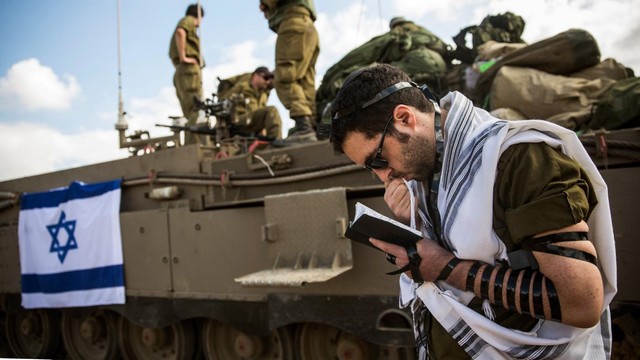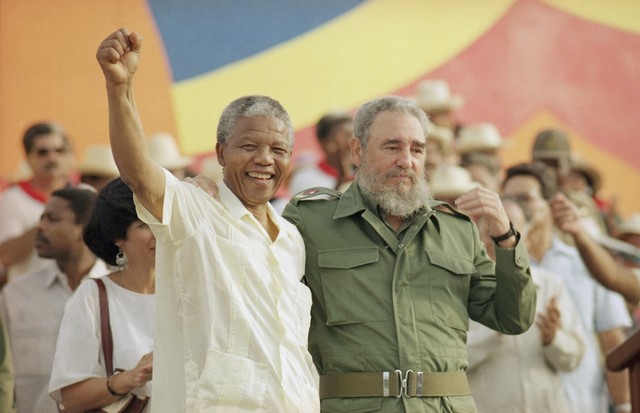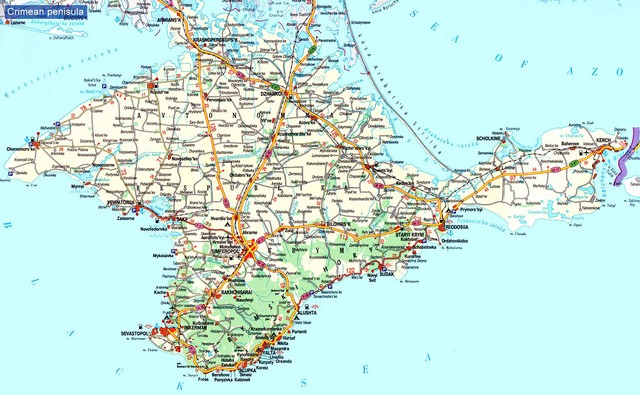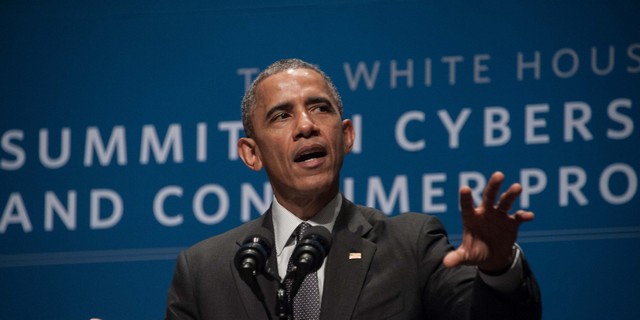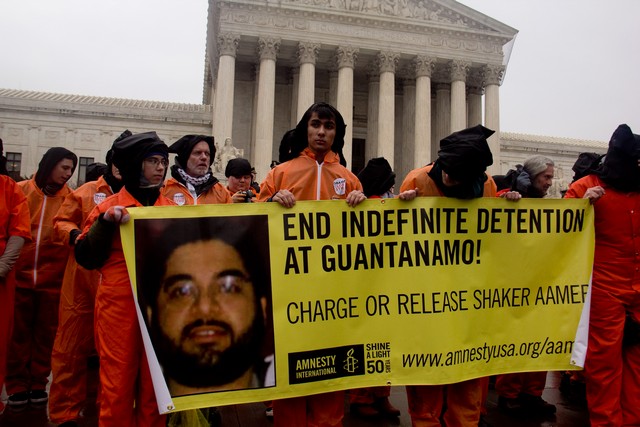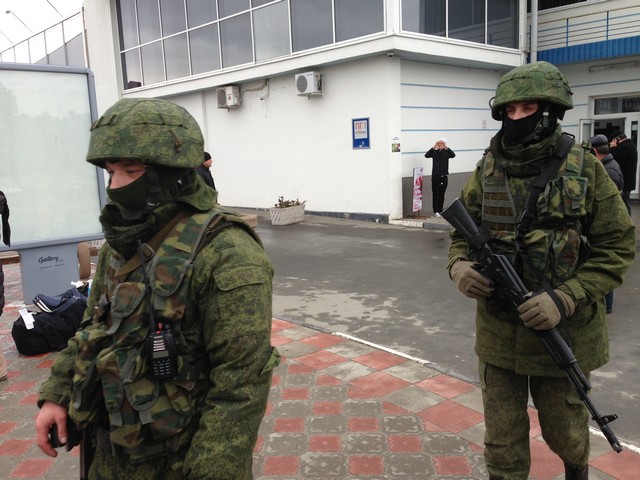By Matt Peppe
Until the fall of the Portuguese dictatorship in 1974, apartheid in South Africa was secure. There was no substantial resistance anywhere in southern Africa. Pretoria’s neighbors comprised a buffer zone that protected the racist regime: Namibia, their immediate neighbor which they had occupied for 60 years; white-ruled Rhodesia; and the Portuguese-ruled colonies of Angola and Mozambique. The rebels who fought against minority rule in each of these countries, operating without any safe haven to organize and train, were powerless to challenge the status quo. South Africa’s buffer would have remained intact for the foreseeable future, solidifying apartheid and preventing any significant opposition, but for one man: Fidel Castro.
In October of 1975, South Africa invaded Angola at the behest of the U.S. government to overthrow the left-wing Popular Movement for the Liberation of Angola (MPLA) in the soon-to-be independent country. Without Cuban assistance, the apartheid army would have easily cruised into Luanda, crushed the MPLA, and installed a puppet government friendly to the apartheid regime.
Cuba’s intervention in Angola managed to change the course of that country and reverberate throughout Africa. By ensuring independence from the white supremacists, Angola was able to preserve its own revolution and maintain its role as a base for armed resistance groups fighting for liberation in nearby countries.
In the American version of Cold War history, Cuba was carrying out aggression and acting as proxies of the Soviet Union. Were it not for one persistent and meticulous scholar, we might never have known that these are nothing more than dishonest fabrications. In his monumental books Conflicting Missions and Visions of Freedom, historian Piero Gleijeses uses thousands of documents from Cuban military archives, as well as U.S. and South African archives, to recount a dramatic, historical confrontation between tiny Cuba and Washington and its ally apartheid South Africa. Gleijeses is the only foreign scholar to have gained access to the closed Cuban archives. He obtained thousands of pages of documents, and made them available to the Wilson Center Digital Archive, which has posted the invaluable collection online.
Gleijeses’s research made possible a look behind the curtain at one of the most remarkable acts of internationalism of the century. “Internationalism – the duty to help others – was at the core of the Cuban revolution,” Gleijeses writes. “For Castro’s followers, and they were legion, this was not rhetoric… By 1975, approximately 1,000 Cuban aid workers had gone to a dozen African countries, South Yemen, and North Vietnam. In 1976-77, technical assistance was extended to Jamaica and Guyana in the Western Hemisphere; to Angola, Mozambique, and Ethiopia in Africa; and to Laos in Asia. The CIA noted: ‘The Cuban technicians are primarily involved in rural development and educational and public health projects – areas in which Cuba has accumulated expertise and has experienced success at home.’” [1]
The fight against apartheid, for the liberation of people who suffered for centuries under colonialism and racial subjugation, was truly a David versus Goliath conflict. In addition to having a strong military itself and being armed with nuclear weapons, South Africa enjoyed the diplomatic support of the United States, the world’s largest superpower. In this context, Cuba’s intervention – a poor Caribbean island under relentless attack from an unrivaled hegemon against a racist juggernaut backed by the world’s leading imperial powers – is even more remarkable.
Explaining how the significance of Cuba’s role in Angola is “without precedent,” Gleijeses writes: “No other Third World country has projected its military power beyond its immediate neighborhood.” He notes that while the Soviet Union later sent aid and weapons, they never would have become involved unless Castro had taken the lead (which he did in spite of Russian opposition). “The engine was Cuba. It was the Cubans who pushed the Soviets to help Angola. It was they who stood guard in Angola for many long years, thousands of miles from home, to prevent the South Africans from overthrowing the MPLA government.” [2]
White Elitism Has Suffered an Irreversible Blow
It had become clear that the left-wing People’s Movement for the Liberation of Angola (MPLA), the largest and most widely-supported of three warring groups, would prevail and gain control of the country. Afraid of having a government staunchly opposed to white domination so close to home, South Africa rushed to prevent self-determination for the Angolans. They were aided by U.S. Secretary of State Henry Kissinger, who believed the threat of black liberation in Africa, which would lead to local control of their own resources at the expense of foreign investors, could still be contained.
South Africa launched an invasion to topple the MPLA and install the guerilla Jonas Savimbi, leader of the National Union for the Total Independence of Angola (UNITA), the smallest and least popular of the three groups, as a puppet dictator in Angola. Savimbi, a collaborator with the Portuguese dictatorship before Angolan independence, was known for his ruthlessness, terrorism, and hunger for power. An avowed anti-communist who had already aligned with South Africa, Savimbi would have made the perfect Angolan facade for apartheid control.
Agostinho Neto, the President of Angola, appealed to Cuba to send troops to ward of the apartheid army’s invasion. On November 4, Castro agreed. Several days later the first Cuban special forces troops boarded planes for Angola, where they would launch Operation Carlota.
As the South African troops advanced inside Angola, they made remarkably easy gains through scarcely defended villages that put up little – if any – resistance. But by November 9, Cuban Special Forces had arrived and went immediately to the battlefield. In the Battle of Quifangondo, the Angolans, supported by Cuban troops, made a decisive stand. They turned back the apartheid army and prevented their easy march to Luanda, where that same day the Portuguese military left Angola and Neto declared independence.
Throughout November, the Cubans prevented further South African advances towards the Angolan capital. On November 25, the Cuban troops laid a trap for the racist army in the Battle of Ebo. As the South African Defence Force (SADF) tried to cross a bridge, Cubans hidden along the banks of the river attacked. They destroyed seven armored cars and killed upwards of 90 enemy soldiers.
Cuban troops kept pouring into Angola throughout the rest of the year. As many as 4,000 had arrived by the end of 1975, roughly the same number as South African invaders. Unable to penetrate deeper into Angolan territory, and facing a barrage of negative criticism after international media discovered SADF troops, rather than mercenaries, were behind the invasion, the South African advance ended.
The impact of the Cuban victory resonated far beyond the battlefield. More important than the strategic gain, the victory of black Cuban and Angolan troops against the whites of the South African racist army shattered the illusion of white invincibility.
A South African military analyst described the meaning of his country’s defeat: “The reality is that they have won, are winning, and are not White; and that psychological edge, that advantage the White man has enjoyed and exploited over 300 years of colonialism and empire, is slipping away. White elitism has suffered an irreversible blow in Angola, and Whites who have been there know it.” [3]
American officials claimed that the Soviets masterminded the operation with Cubans acting as their proxies. They couldn’t fathom Castro acting on its own, rather than as Moscow’s puppet. Such claims were repeated for years. American politicians went as far as falsely accusing Cuban troops of being mercenaries. But the record makes clear that these were in reality nothing more than slanderous lies.
The Americans were furious. “Kissinger’s response to Castro’s intervention was to throw mercenaries and weapons at the problem,” Gleijeses writes. [4] The Secretary of State was afraid that after their successful intervention in Angola, Cuba would put the rest of the racist regimes in the region in jeopardy. “We can’t say Rhodesia is not a danger because it is a bad case. If the Cubans are involved there, Namibia is next and after that South Africa, itself… If the Cubans move, I recommend we act vigorously. We can’t permit another move without suffering a great loss.” [5]
Support and Solidarity with Revolutionary Movements
Though South Africa had lost the battle, it by no means had surrendered the war. The apartheid regime still had designs on toppling the Angolan revolution and using it for its own ends. “It would be the centerpiece of the Constellation of Southern African States that they sought to create,” writes Gleijeses. “The concept had first emerged under Prime Minister Vorster, but it was PW Botha who had given it ‘a substance previously lacking.’ The constellation, the generals hoped, would stretch beyond South Africa, its Bantustans, Lesotho, Malawi, Botswana, and Swaziland, to embrace Angola, Mozambique, Zimbabwe, Zambia, Zaire, and a nominally independent Namibia. The black members of the constellation would be anticommunist, tolerant of apartheid, and eager to persecute the ANC (the African National Congress in South Africa) and SWAPO (the South West Africa People’s Organization in Namibia).” [6]
Cuba was aware of this. “In Southern Africa Angola today, more so than a year ago, is the bastion of the fight against the racists and the unquestionable revolutionary vanguard. Imperialism knows this,” wrote Jorge Risquet, head of the Cuban Civilian Mission in Angola to President Neto. “Imperialism has to know what Angola does for Zimbabwe, what Angola does for Namibia, what Angola does for South Africa. Angola, bravely, lends real support to the movements of Namibia, Zimbabwe, South Africa. In concrete terms, nothing less than training in its territory 20,000 combatants from those three countries oppressed by the racists.” [7]
With the omnipresent threat against Angola, Cuba maintained a large contingent of around 30,000 troops at the behest of the MPLA to prevent another invasion. In a letter to the political bureau of the MPLA after Neto’s death, Fidel wrote of the sacrifice Cuba was willing to make.
“Cuba cannot keep indefinitely carrying out a military cooperation effort of the magnitude it currently is in Angola, which limits our possibilities of support and solidarity with the revolutionary movement in other parts of the world and defense of our own country,” Fidel wrote. But he made clear that Cuba had no plans to abandon Angola: “I want to assure you, above all, that in these bitter and difficult circumstances, Cuba will be unconditionally at your side.” [8]
Meanwhile, South African aggression was relentless. In 1983, the SADF bombed Angolan towns and pushed nearly 90 miles into Angolan territory. When the UN moved to condemn the invasion, the United States made sure the censure would not include sanctions, as they had done for more than a decade.
The apartheid regime used Washington’s diplomatic shield to keep its dreams of a Constellation of Southern African States alive. The International Court of Justice had decisively rejected the continued presence of South Africa in Namibia in a 1971 Advisory Opinion as “illegal.” The court declared that “South Africa is under obligation to withdraw its administration from Namibia immediately and thus put an end to its occupation of the territory.” Seven years later, the UN Security Council passed Resolution 435 reiterating its objective of “the withdrawal of South Africa’s illegal administration from Namibia and the transfer of power to the people of Namibia.”
Washington’s support enabled South Africa to ignore the ICJ and UN Security Council. The apartheid government, understanding that free elections would mean a SWAPO victory, refused to comply. “The South Africans took advantage of U.S. goodwill to further their foreign policy aims,” Gleijeses writes. [9]
In 1978, a South African massacre against a refugee camp in Cassinga killed more than 600 Namibians. The U.S. opposed sanctions in the Security Council. President Carter took the excuses of the apartheid regime at face value: “They’ve claimed to have withdrawn and have not left any South African troops in Angola. So we hope it’s just a transient strike in retaliation, and we hope it’s all over.” Even after Angolans foiled an attack by South African commandos against Gulf Oil pipelines inside Angola in 1985, which would have killed U.S. citizens, the U.S. government continued protecting their racist allies.
The Whole World is Against Apartheid
As international opinion turned, Castro sensed that apartheid in South Africa would not be able to last much longer. Despite the growing cost to Cuba of maintaining about 30,000 troops in Angola, Castro was confident that he would be able to wait out the inevitable downfall of the racist regime.
“Today they are totally on the defensive in the political arena, in the international arena, they have a very serious economic crisis,” Castro said in a conversation with Angolan President José Eduardo Dos Santos in 1985. “I can’t say how this is going to end, what the end result of it all will be; but in my opinion, South Africa won’t recover from this crisis.” Castro said that the situation facing South Africa did not occur by chance, but that it was a result of the collective action of the people in many parts of Southern Africa fighting for their independence. “All these factors, common struggles, common sacrifices, have contributed to create this crisis for apartheid, that wasn’t created in one day, it was created over many years,” Castro said. [10]
“I believe that apartheid – I sincerely believe it – is mortally wounded,” Castro said.[11]
Nevertheless, the apartheid government kept up its relentless fight for survival. Throughout the 1980s, Angola was subjected to various incursions and invasions by South Africa. At the same time, the Angolan Armed Forces (FAPLA) fought against former Portuguese collaborator Jonas Savimbi and his UNITA army, who was backed by South Africa and the United States. Savimbi sought to roll back MPLA rule and form an alliance with the apartheid regime.
The confrontations climaxed in the Battle of Cuito Cuanavale in late 1987. After a forward offensive to attack UNITA stalled, Angolan and Cuban troops managed to defend the town. They then turned to the Southwest where they attempted to drive the SADF out of the country once and for all. As the Cubans asserted supremacy with their air force, they were able to take the lead on the battlefield.
With the military confrontation raging, talks started between Angola, Cuba and South Africa, with the United States moderating, in London in early 1988. In instructions to the Cuban delegation, Castro reflected on the South Africans and American mindset.
“The fact they have accepted this meeting in London at such a high level shows that they are looking for a way out because they have seen our advance and are saying, ‘How is it that Cuba has converted itself into the liquidator of Apartheid and the liberator of Africa?’ That’s what is worrying the Americans, they’re going to say: ‘They’re going to defeat South Africa!” Castro said. [12]
Castro also told his delegation that the goal was not to pursue a war or military victory, but to achieve negotiations over SADF from Angola and implementation of Resolution 435, which would grant independence to Namibia. “They should know that we are not playing games, that our position is serious and that our objective is peace,” he said. [13]
The Cuban Commander-in-Chief’s instructions to his negotiating team show that he fully understood that Cuba stood firmly on the right side of history.
“All of Africa is in favor, all of the non-aligned movement, all the United Nations, the whole world is against Apartheid,” Castro said. “This is the most beautiful cause.” [14]
The negotiations would continue throughout the year and lead to the New York agreements in December 1988, which Gleijeses says “led to the independence of Namibia and the withdrawal of the Cuban troops from Angola.” [15]
This was the beginning of the end of apartheid.
“By the time Namibia became independent, in March 1990, apartheid was in its death throes,” Gleijeses writes. “A month earlier, Frederick de Klerk, who had replaced the ailing PW Botha as South Africa’s president, legalized the ANC and the South African Communist Party, and he freed Nelson Mandela. The apartheid government engaged in protracted and difficult negotiations that led in April 1994 to the first elections in the country’s history based on universal franchise.” [16]
The Contribution of the Cuban Internationalists
No one was more grateful for Cuba’s role in the defeat of apartheid and the liberation of blacks in Africa than Nelson Mandela. In July 1991, during a visit to Cuba to mark the 38th anniversary of the Cuban revolution, Mandela spoke of his gratitude for the Cuban role in Southern Africa.
“The Cuban people hold a special place in the hearts of the people of Africa. The Cuban internationalists have made a contribution to African independence, freedom and justice, unparalleled for its principled and selfless character,” Mandela said. “We in Africa are used to being victims of countries wanting to carve up our territory or subvert our sovereignty. It is unparalleled in African history to have another people rise to the defence of one of us.”
Many years later, after the passing of Nelson Mandela, Castro would wonder why after so many years the enablers of apartheid still could not admit the truth.
“Why try to hide the fact that the apartheid regime, which made the people of Africa suffer so much and incensed the vast majority of all the nations in the world,”Castro wrote, “was the fruit of European colonialism and was converted into a nuclear power by the United States and Israel, which Cuba, a country who supported the Portuguese colonies in Africa that fought for their independence, condemned openly?”
Since the success of the Cuban revolution of 1959, American policy has always been reflexive opposition to anything Cuba did. Shortly after Mandela’s funeral, Gleijeses wrote an open letter to President Obama that described the actual course of events in Africa during the Cold War: “While Cubans were fighting for the liberation of the people of South Africa, successive American governments did everything they could to stop them.”
Gleijeses wrote that Obama must have noticed the reception of Cuban President Raúl Castro in South Africa, and implored him to reconsider the disconnect between the two countries. “Perhaps, Mr. President, what you saw in South Africa may inspire you to bridge the chasm and understand that in the quarrel between Cuba and the United States the United States is not the victim,” he wrote.
But Obama has not been able to learn this lesson. On December 17, when he announced a change in the U.S.’s Cuban policy, Obama claimed that the current policy “has been rooted in the best of intentions.” This is a gross misrepresentation that suppresses the policy of unrelenting economic war, which has caused unimaginable pain and suffering to millions of Cubans; a covert terrorist campaign against the island carried out first directly by the U.S. government then later sanctioned and outsourced to reactionary terrorists provided safe haven in the United States; and collaboration with the apartheid regime to punish Cuba for helping fight for the liberation of black Africa.
American officials would, no doubt, prefer that Cuba’s heroic role in defeating apartheid and the U.S.’s shameful role in enabling it be relegated to the ash heap of history. But the historical and documentary record speaks for itself, despite Washington’s attempts to bury it. Like Castro, one has to wonder: why keep hiding the truth?
Matt Peppe writes about politics, U.S. foreign policy and Latin America on his blog. You can follow him on twitter.
Works Cited
[1] Gleijeses, Piero. Visions of Freedom: Havana, Washington, Pretoria, and the Struggle for Southern Africa, 1976-1991. The University of North Carolina Press, 2013. http://www.amazon.com/Visions-Freedom-Washington-Pretoria-1976-1991-ebook/dp/B00GJQHOJ4/ref=sr_1_1?ie=UTF8&qid=1420320673&sr=8-1&keywords=visions+of+freedom
[2] Ibid.
[3] as cited in Gleijeses, 2013
[4] Gleijeses, Piero. Conflicting Missions: Havana, Washington, and Africa, 1959-1976 (Envisioning Cuba). The University of North Carolina Press, 2002.http://www.amazon.com/Conflicting-Missions-Washington-1959-1976-Envisioning-ebook/dp/B004P1JTGG/ref=sr_1_1_twi_2?ie=UTF8&qid=1423430995&sr=8-1&keywords=conflicting+missions
[5] “NSC Meeting, 4/7/1976” of the National Security Adviser’s NSC Meeting File at the Gerald R. Ford Presidential Library. (pg. 21)http://www.fordlibrarymuseum.gov/library/document/0312/1552402.pdf
[6] Gleijeses, 2013
[7] Jorge Risquet to Agostinho Neto,” February, 1978, History and Public Policy Program Digital Archive, Archives of the Central Committee of the Cuban Communist Party. Obtained and contributed to CWIHP by Piero Gleijeses and included in CWIHP e-Dossier No. 44. http://digitalarchive.wilsoncenter.org/document/117933 (pg. 8-9)
[8] “Fidel Castro to Political Bureau of the MPLA,” September 15, 1979, History and Public Policy Program Digital Archive, Archive of the Cuban Armed Forces. Obtained and contributed to CWIHP by Piero Gleijeses and included in CWIHP e-Dossier No. 44. http://digitalarchive.wilsoncenter.org/document/117946 (pg. 2-3)
[9] Gleijeses, 2013
[10] Memorandum of Conversation between Fidel Castro and José Eduardo dos Santos,” October 25, 1985, History and Public Policy Program Digital Archive, Archives of the Central Committee of the Cuban Communist Party. Obtained and contributed to CWIHP by Piero Gleijeses and included in CWIHP e-Dossier No. 44. http://digitalarchive.wilsoncenter.org/document/118021 (pg. 31-33)
[11] Ibid. (pg. 32)
[12] Instructions to the Cuban Delegation for the London Meeting, ‘Indicaciones concretas del Comandante en Jefe que guiarán la actuación de la delegación cubana a las conversaciones de Luanda y las negociaciones de Londres (22-4-88)’
http://digitalarchive.wilsoncenter.org/document/118133.pdf (pg. 11)
[13] Ibid. (pg. 13)
[14] Instructions to the Cuban Delegation for the London Meeting, ‘Indicaciones concretas del Comandante en Jefe que guiarán la actuación de la delegación cubana a las conversaciones de Luanda y las negociaciones de Londres (23-4-88)’,” April 23, 1988, History and Public Policy Program Digital Archive, Archive of the Cuban Armed Forces. Obtained and contributed to CWIHP by Piero Gleijeses and included in CWIHP e-Dossier No. 44. http://digitalarchive.wilsoncenter.org/document/118134 (pg. 5)
[15] Gleijeses, 2013
[16] Gleijeses, 2013
23 February, 2015
Countercurrents.org

